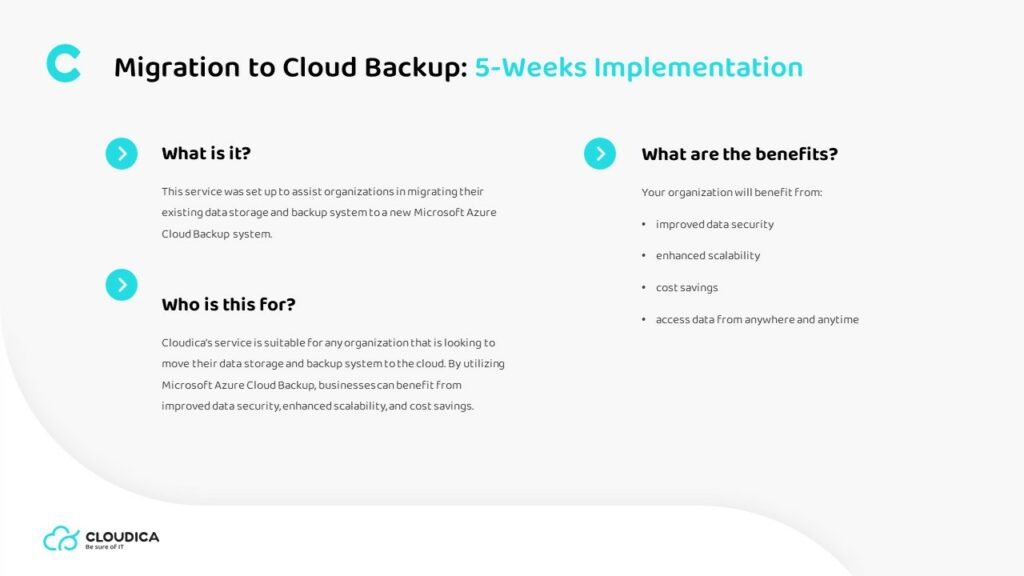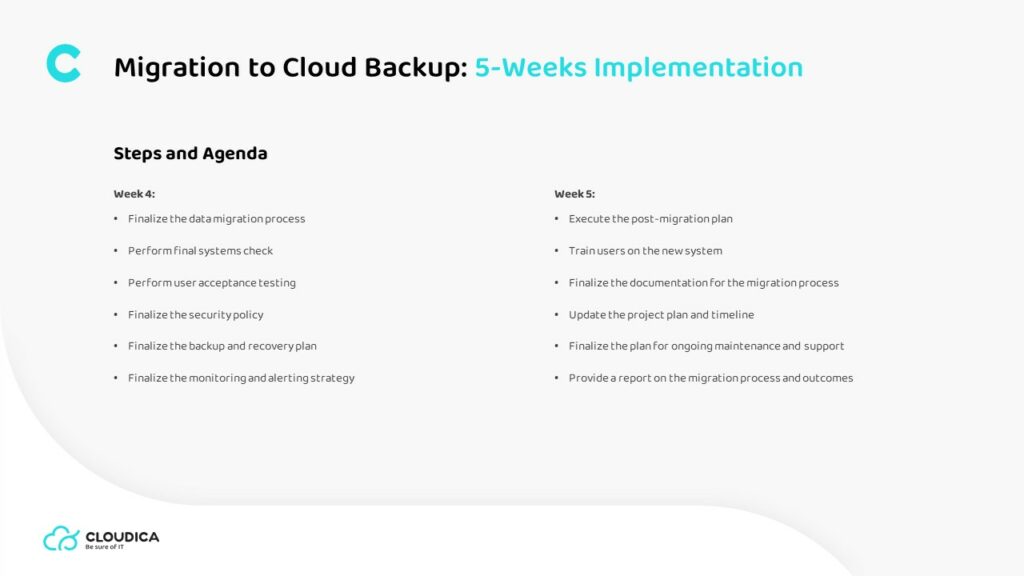What is it?
This service was set up to assist organizations in migrating their existing data storage and backup system to a new Microsoft Azure Cloud Backup system.
What is for?
Cloudica’s service is suitable for any organization that is looking to move their data storage and backup system to the cloud. By utilizing Microsoft Azure Cloud Backup, businesses can benefit from improved data security, enhanced scalability, and cost savings.
What are the benefits?
Your organization will benefit from:
• improved data security
• enhanced scalability
• cost savings
• access data from anywhere and anytime
Outcomes of this
We will ensure that the Microsoft Azure Cloud Backup is smooth and successful, with minimal disruptions to business operations. Our 5-week implementation plan covers all the necessary steps to transition to Microsoft Azure Cloud Backup, including:
• assessing the current system,
• developing a tailored migration plan,
• leading the implementation process.
Steps and agenda
Week 1:
• Assess current infrastructure and develop an understanding of the client’s requirements
• Create a detailed project plan and timeline
• Develop a roadmap for the migration to Microsoft Azure
• Identify the tools, technologies, and services needed to support the migration
• Identify the stakeholders and their roles in the migration
• Develop a data-migration strategy
• Develop a security policy for the Microsoft Azure environment
Week 2:
• Establish a secure connection between the client’s on-premises environment and the Azure cloud
• Configure the Azure storage accounts and other services
• Configure the Azure Backup service
• Test the migration process
• Develop a backup and recovery plan
• Develop a monitoring and alerting strategy
Week 3:
• Begin the data migration process
• Monitor the migration process
• Troubleshoot any issues that arise
• Document the migration process
• Develop a post-migration plan
• Develop a plan for ongoing maintenance and support
Week 4:
• Finalize the data migration process
• Perform final systems check
• Perform user acceptance testing
• Finalize the security policy
• Finalize the backup and recovery plan
• Finalize the monitoring and alerting strategy
Week 5:
• Execute the post-migration plan
• Train users on the new system
• Finalize the documentation for the migration process
• Update the project plan and timeline
• Finalize the plan for ongoing maintenance and support
• Provide a report on the migration process and outcomes
Most popular offerings
Contact
Ready to meet the only technology partner you'll ever need?











